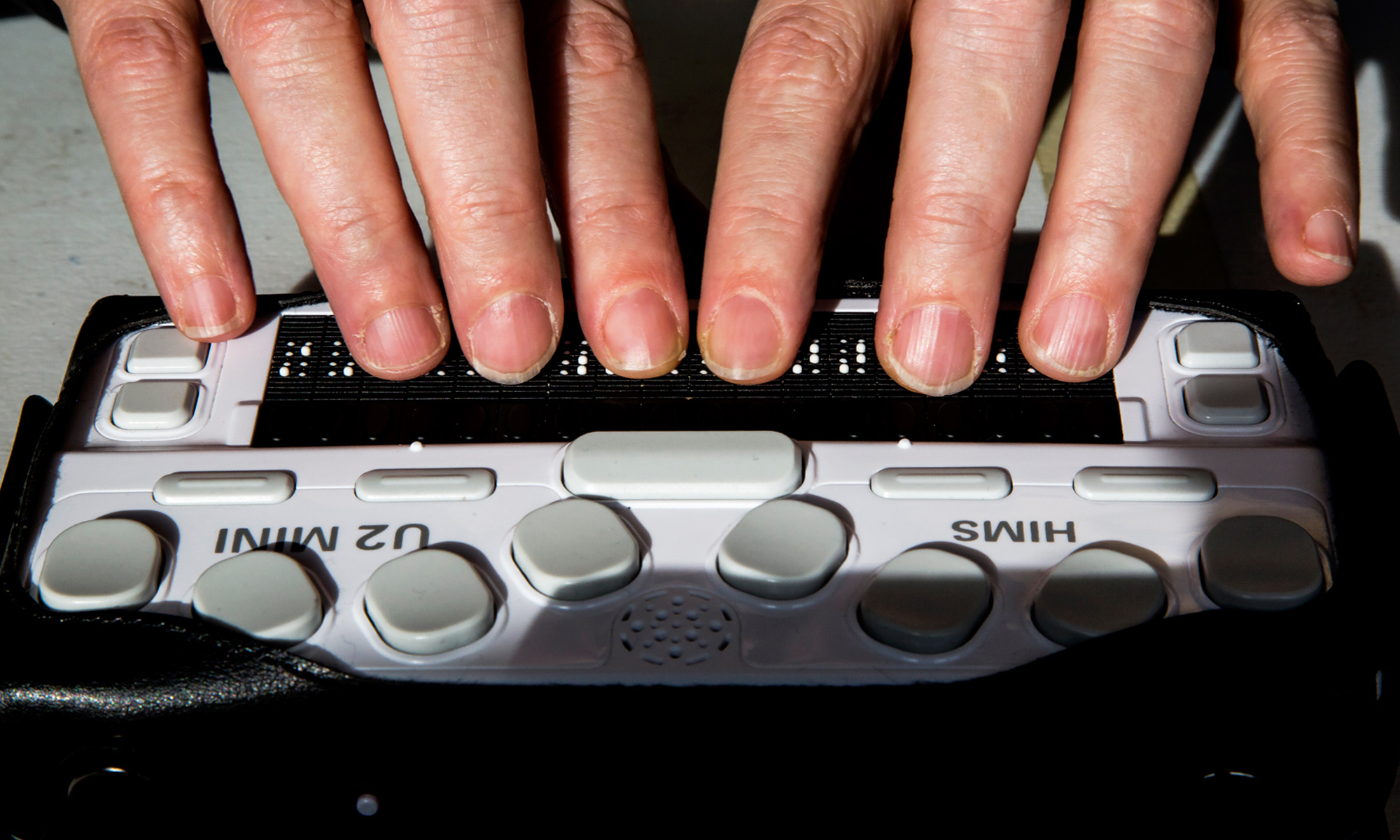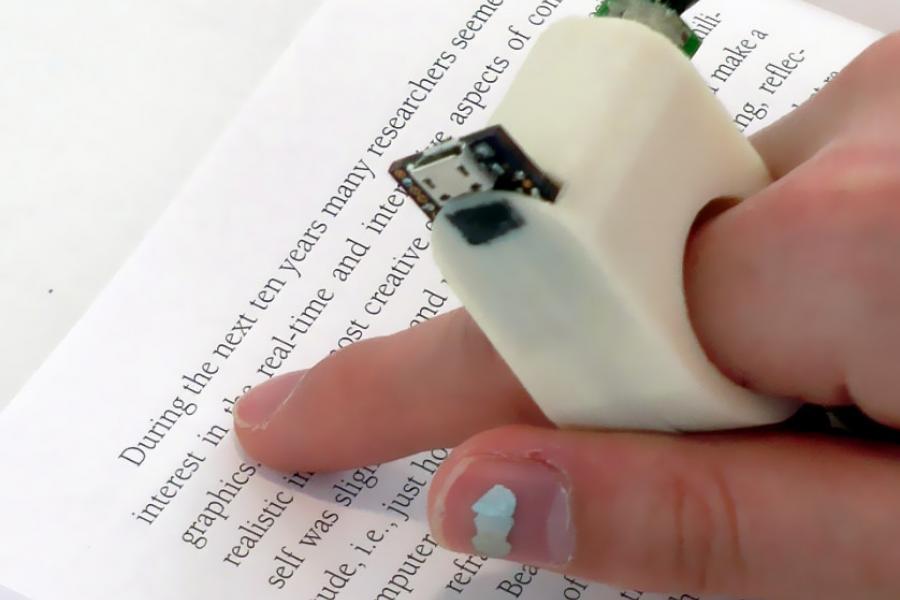Voice-Activated Assistive Devices: Enabling the Visually Impaired
Voice-Activated Assistive Devices: Enabling the Visually Impaired
Blog Article
Discover Innovative Tools Developed for the Visually Damaged
The development of innovative tools for the aesthetically impaired stands for a significant improvement in accessibility and freedom. Technologies such as smart glasses with AI capacities and mobile applications developed to provide acoustic summaries are improving day-to-day experiences for individuals.
Smart Glasses for Navigating
.png)
Smart glasses developed for navigating are revolutionizing the way aesthetically impaired individuals interact with their atmosphere. These sophisticated gadgets use a mix of electronic camera modern technology, expert system, and acoustic comments to provide real-time info concerning surroundings. By using obstacle discovery systems, clever glasses can alert individuals to prospective threats, allowing more secure mobility in both acquainted and unknown settings.
The assimilation of GPS technology better improves navigating capacities, allowing individuals to receive auditory directions as they relocate. This hands-free method not only promotes self-reliance but likewise encourages visually damaged people to browse city landscapes with increased confidence. In addition, many wise glasses are geared up with features that recognize landmarks and road indications, providing contextual information that enhances the individual experience.
Additionally, the growth of these devices is constantly progressing, with companies working to boost the precision of item acknowledgment and increase the series of navigational functions. As smart glasses end up being more inexpensive and obtainable, they hold the potential to significantly transform every day life for aesthetically impaired customers. Eventually, these ingenious devices stand for an essential action toward inclusivity, offering improved mobility and a higher sense of autonomy for people navigating the world around them.

Mobile Application for Daily Living
How can mobile applications enhance the day-to-days live of visually damaged people? Mobile apps are revolutionizing the means aesthetically impaired individuals browse their settings, take care of day-to-day tasks, and access info. These applications offer essential assistance with different capabilities, promoting self-reliance and enhancing quality of life.
Several cutting-edge mobile apps are made especially for day-to-day living. As an example, apps like Be My Eyes connect aesthetically impaired customers with sighted volunteers through video telephone calls, allowing them to get real-time support with tasks such as checking out labels or navigating strange spaces. Seeing AI, established by Microsoft, makes use of synthetic knowledge to describe surroundings, checked out message, and identify items, properly transforming a smartphone right into a powerful device for everyday aid.
In addition, navigation apps tailored for the aesthetically impaired, such as Aira and BlindSquare, supply audio-based directions and environmental information, making it possible for users to traverse their environments safely and with confidence. Beyond navigating and prompt support, mobile applications additionally sustain company and task monitoring, with functions that assist individuals establish tips, create order of business, and track consultations. In recap, mobile applications act as vital resources, empowering visually impaired people to lead even more independent and satisfying lives.
Wearable Technologies for Help
Empowerment with modern technology is increasingly obvious in the world of wearable gadgets created to help aesthetically damaged individuals. These cutting-edge tools incorporate effortlessly into life, boosting navigation and giving important responses to users. For example, wise glasses outfitted with cameras can read and recognize faces text aloud, enabling individuals to engage more with confidence in specialist and social settings.
Another remarkable development is using haptic feedback systems in wearable devices. These systems utilize resonances or other responsive signals to communicate information regarding the user's atmosphere, such as challenges or modifications in terrain, boosting wheelchair and safety. Wearable technologies also include wristbands that link to smartphones, signaling customers to notices via subtle vibrations, therefore boosting connectivity without reliance on visual cues.
As these innovations continue to advance, they are not only enhancing self-reliance for visually damaged people however also promoting a better feeling of inclusion in society. By bridging the gap between obstacles encountered in daily living and the capacity for freedom, wearable technologies work as pivotal tools in the quest for equality and find out here now empowerment for those with visual impairments.
Audio Summary Devices
Audio summary tools play a critical duty in boosting accessibility for visually impaired people, supplying them with the capability to involve with visual media. Screen readers for the blind. These devices provide narrated descriptions of key aesthetic aspects in films, tv shows, and live efficiencies, ensuring that individuals can totally comprehend the context and emotions communicated through visuals
Sound summary can be integrated into numerous platforms, consisting of streaming services, movie theater screenings, and live cinema. Numerous prominent streaming services now consist of audio description as an access attribute, enabling customers to choose it conveniently. Along with traditional media, specialized check that applications additionally exist, offering audio descriptions for art events, galleries, and various other social occasions.
The performance of audio summary depends upon the skill of the narrators, that need to convey visual information succinctly without interfering with the original audio. Innovations in this area are also paving the means for even more tailored experiences, where users can readjust the degree of information and pacing according to their preferences.
Braille Innovations and Tools
Braille developments and tools have considerably transformed the method aesthetically damaged people engage with text and info. Modern improvements have resulted in the growth of flexible tools that boost literacy and self-reliance amongst individuals. Especially, Braille show modern technologies have actually progressed, permitting vibrant reading experiences. These tools convert electronic text right into Braille, allowing individuals to access a huge selection of info on computer systems, mobile phones, and tablets.
Additionally, portable Braille notetakers combine traditional Braille input with contemporary functionalities, promoting note-taking, scheduling, and paper modifying on the go. AI-powered visual aids. These compact tools commonly feature text-to-speech capabilities, linking the gap in between Braille and auditory details
Additionally, cutting-edge Braille printers have actually arised, allowing customers to create Braille tags, documents, and instructional products efficiently. This availability fosters higher participation in specialist and educational environments, ultimately advertising inclusivity.
Additionally, study right into clever Braille innovations remains to increase. Devices that include expert system are being explored to supply real-time navigation assistance and contextual info, enhancing the customer experience in diverse setups. Generally, these advancements mirror a commitment to encouraging aesthetically impaired people via modern technology, gold glasses frames ensuring they can easily accessibility and involve with the globe around them.

Verdict
The innovation of ingenious tools for the visually damaged dramatically boosts independence and quality of life. These technologies not only foster greater incorporation yet likewise advertise freedom in daily activities, inevitably adding to a much more available and fair culture for visually impaired individuals.
As wise glasses become much more economical and available, they hold the prospective to dramatically transform everyday life for aesthetically damaged users. Mobile applications are revolutionizing the means visually impaired individuals browse their environments, manage everyday jobs, and accessibility details. Applications like Be My Eyes attach aesthetically impaired users with sighted volunteers using video clip telephone calls, permitting them to receive real-time help with jobs such as reading tags or browsing unknown rooms.Furthermore, navigating apps tailored for the aesthetically damaged, such as Aira and BlindSquare, provide audio-based instructions and ecological info, enabling individuals to traverse their surroundings safely and confidently.The advancement of ingenious devices for the aesthetically damaged dramatically boosts freedom and quality of life.
Report this page